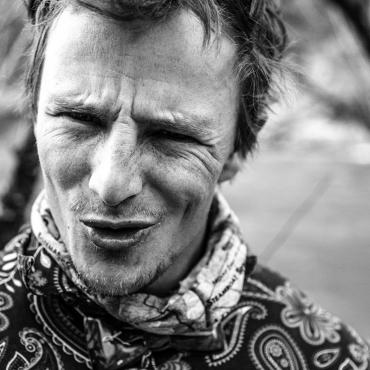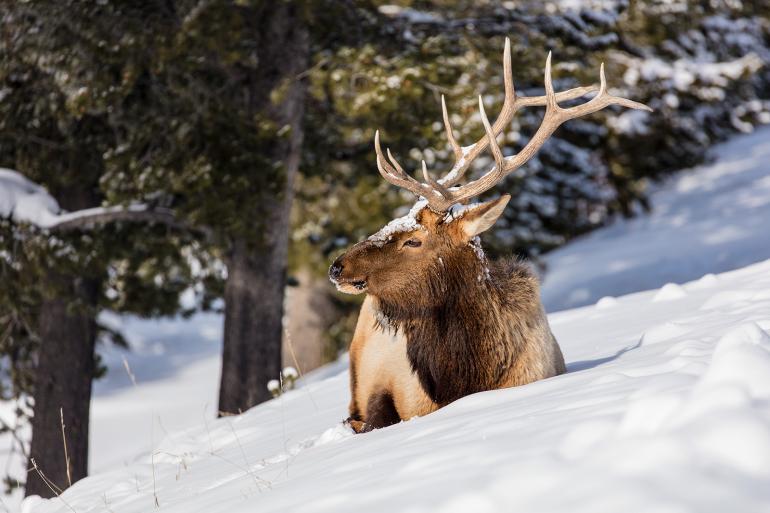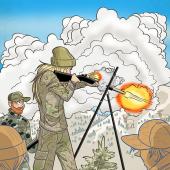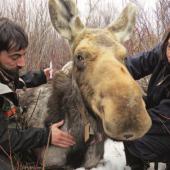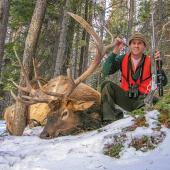Bigger Than the Game
The hunt for a harvest.
It had been a slow season. Long hikes, bad weather, and empty packs had become the norm. Any day in the woods is a good day, but it’s hard to deny the feeling of defeat that comes after not turning up critters despite loads of miles, hours of glassing, and wind that makes your head rattle. So when we saw the herd at last light, we got excited.
Seven brown bodies stuck out just enough to give us a glimpse before the cloud ceiling collapsed and the storm started. Sarge, my partner in lunacy, had been trekking around with me for most of the season, sans rifle. We had one more day.
The next morning the alarm came early. A fresh snow had fallen, but the stars were visible overhead. For the entire three-mile hike in, I played through scenarios in my head. I had in mind where I thought they’d be and assessed and reassessed my playbook for the best approach. I felt like a sprinter waiting for the gun to go off.
When the sun broke the horizon, we picked them up immediately: five cows and two bulls stood opposite the hillside we were on. In my pre-dawn anticipation, I’d hoped for a shot across the swale that connected the two slopes. But, as it was, the elk were too far. We’d have to cross onto the face they were feeding on and catch them in the broken timber. The hills were steep. We wouldn’t be able to see them until we were right on them. Plenty of opportunity to spook something before laying eyes on it. But that’s the hand we were dealt. There would be close combat or there would be none at all.
We hustled across the hillside and caught their tracks. Then began the stalk. Our field of view ranged out to about 70 yards and it changed every five steps. The pace was slow, but eventually we came to a point where two sets of tracks broke from the others. I assumed these were the bulls, but for some reason I decided to stay on the main herd. We followed them for over an hour and about a mile up into thick timber. Just as the slope began to level out, Sarge spotted a cow in its bed.
Aware of our presence but not concerned enough to bolt, she stood up and shuffled about 40 yards to our left. Then came numbers two, three, four, and five. Cow, spike, spike, cow. Though the females were legal, my dad had requested I shoot a bull. Not as much for the antlers, but as a personal attempt to keep the herds around on public land. He hated that cows were legal in the first place and he blamed the abundance of antlerless B tags for the lack of elk we witnessed. The freezer was getting low, but this was dad’s secret spot of 30 years. I decided to honor his ethic.
We crept out of the trees and made our way back toward the area where the two sets of tracks had split. My confidence level was wavering given the amount of time that had passed, but as soon as we returned I spotted the older of the bulls bedded under a tree. It was as if dad himself had put him there.
The next part was quick and what I hoped was as painless as a kill can be. He barely rolled from his bed.
I knelt beside the animal and thanked him for his life. The bull would provide many meals over the next year, cultivating community around a table and a relationship to one’s food. He stood as a symbol for wild and free-ranging animals, intact landscapes, and the freedom to roam as both predator and prey. What lie before us, bundled in tawny hide and resting in pungent sage, represented nothing less than the greatest parts of America.
"Man, he’s sure somethin’," Sarge said. Sure is, indeed.
Editor’s note: Experiences like the one just described are at risk. Hunting as we know it in Montana is being threatened by legislation that could privatize wildlife and eliminate access. Stay up with current bills, weigh in as public landowners, and cast your vote for representatives who will protect our cherished pastime—not just for the wealthy, but for everyone.

